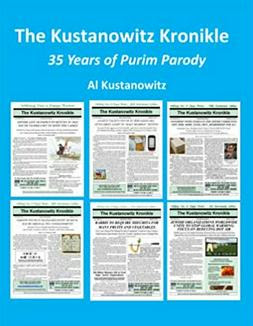If you're a fan of the American musical theatre, you'll remember the 1947 Broadway show Brigadoon, the story of a mysterious Scottish village that appears for only one day every hundred years, though to the villagers, the passing of each century seems no longer than one night.
Well, there's a Jewish version. Every year, in the last week of December, hundreds of people gather in what used to be the Granit Hotel in Kerhonkson, in New York's Catskill Mountains, to immerse themselves in Yiddish culture -- song, dance, language, but most important - klezmer.
Writing in The New York Times Arts section last month, Joseph Berger reported:
Not only were the evening music and dance programs a tribute to vigorous life, but those who took part in the courses — more than 50 were offered, with six sessions apiece — also seemed to revel in the chance to reacquaint themselves with the unmatched expressions they had heard from their bubbes (grandmothers) and zaydes (grandfathers) and the dance steps they had not done since a cousin’s bar mitzvah long ago.
Words tossed about during the week included not just those like kvetch and kibitz, which have entered American idiom, but also fresher candidates like shreklekh (terrible or frightening), naches (prideful joy), farblondget (mixed up) and luftmensch (an impractical person with no apparent income).
Henry Sapoznik, a Ukrainian cantor’s son who helped found KlezKamp in 1984, calls it a “Yiddish Brigadoon,” a gathering, like the Scottish village in that 1947 musical, that comes to life once in a long while after a lengthy snooze. His co-founder, Adrienne Cooper, calls it “a flying shtetl.” But both say that over 25 years the thousands who have taken part have knitted together into a group that stays in touch year round.
If I were to say to you we’re attempting to reactivate Yiddish culture in its full form, I’d be kidding you,” Mr. Sapoznik said. “But what we’re doing here is creating a parallel universe, our own free-standing reality.”
Those who attend — and they include families and singles, children and octogenarians — hail mostly from the East Coast, but some come from much farther afield, like Germany, Denmark, England, Russia and the Netherlands. Mr. Sapoznik estimated that 15 to 20 percent of participants were not Jewish. About half are musicians hankering to hone skills with human artifacts like Pete Sokolow, 69, who as a professional musician in the fading klezmer days of the 1950s played piano with legends like the four Epstein brothers and Dave Tarras.
Still others engage in anthropology, interviewing a handful of old-timers about the children’s games they played, the curses they uttered (“You should grow like an onion with your head in the ground!”) or homespun remedies (urinate on a cut finger and wrap it in a spider web). In one class Susan Leviton introduced a lesser-known song about a mother grieving for her daughter, killed in the Triangle Waist Company factory fire of 1911, who is “wearing shrouds instead of a wedding dress.”
The dance teacher, Steve Weintraub, 55, of Oak Park, Ill., has interviewed aging immigrant dancers and studied grainy films. At KlezKamp classes and parties he has re-enacted the flashtanz — performed with a bottle on the head, to entertain a bride and groom — the merry freylekhs and the sher, an 18th-century square dance.
Everyone seems on a mission to recapture and resurrect, but the work is not just about mining the past. The musicians, for example, are inventing new melodies with a klezmer lilt but flavored with jazz, rock and even salsa.
If you're interested in attending this week, there's still time to register and get in the mood. The conference is strictly kosher and sounds like a lot of fun. All the registration details, cost, schedules, and advice as to what to bring and what not to bring are at the Living Traditions website.
If you want to see what the conference looks like, here's a video clip of the dancing (Patch Tantz) from KlezKamp 2009. Enjoy!















No comments:
Post a Comment